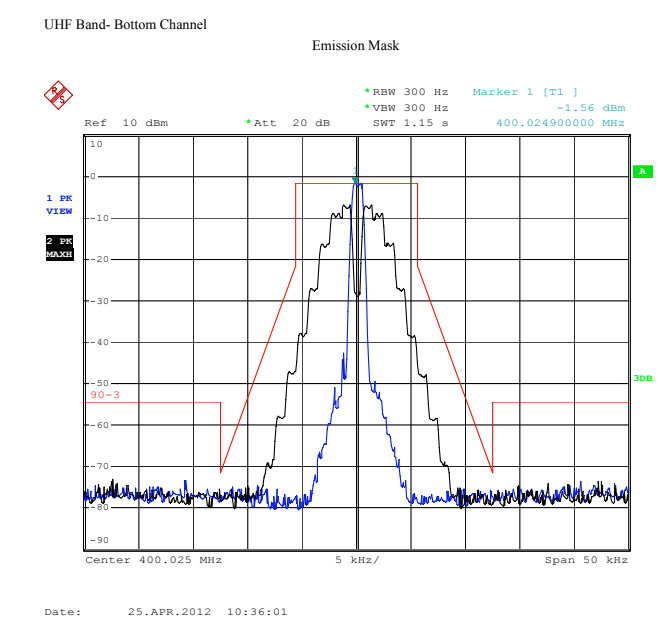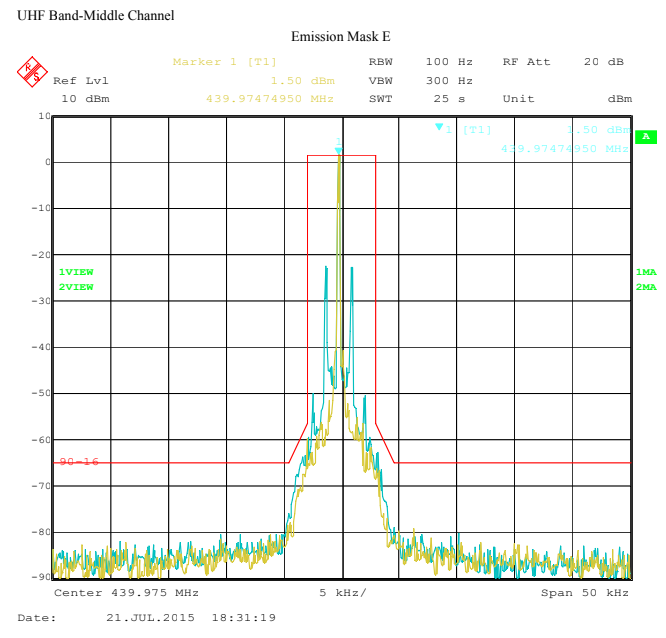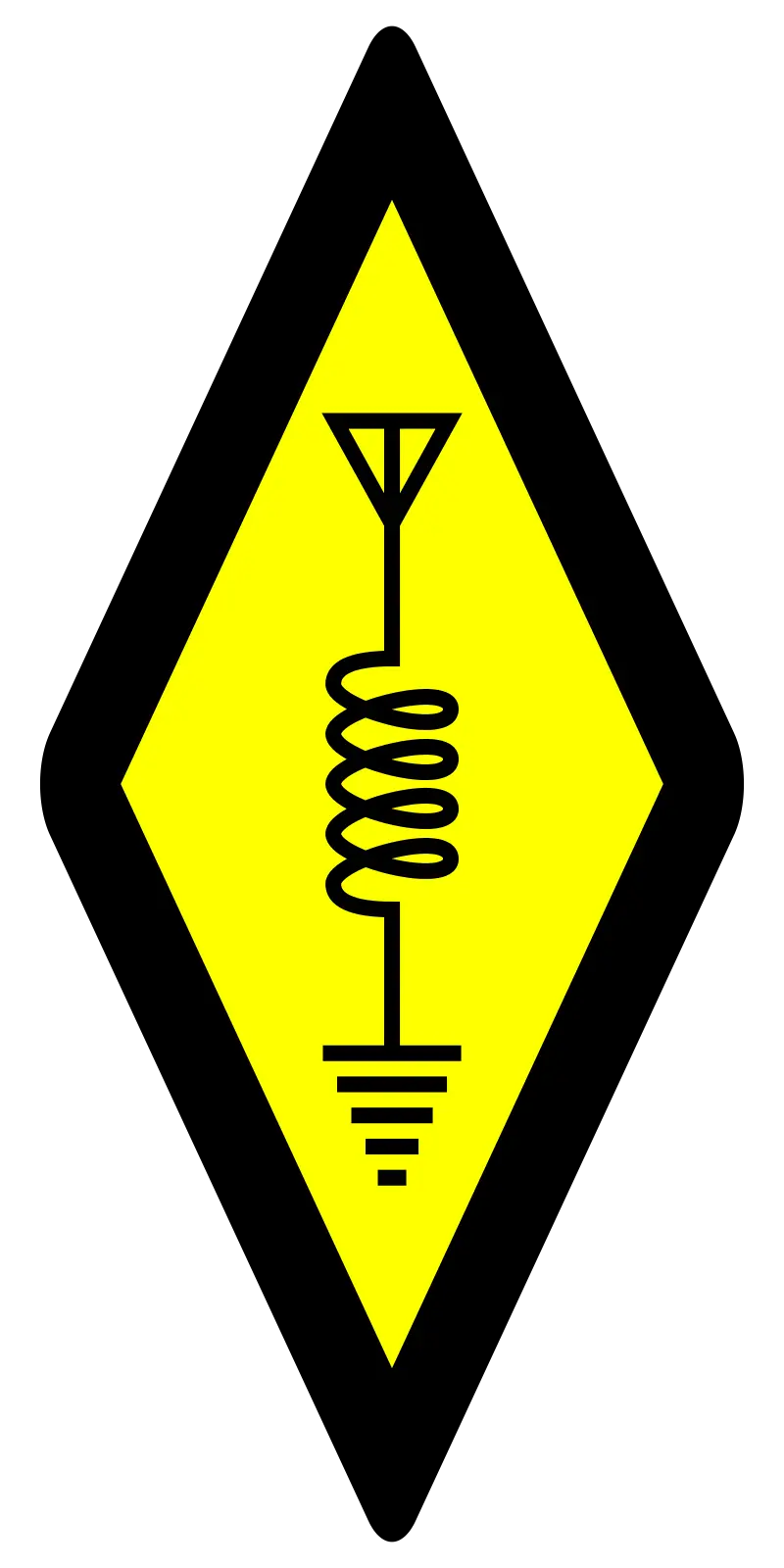Hi, I have a doozy of a first post on this alt. Please forgive my young account age. At least I’ve brought a lot of citations.
I’ve been looking at buying another Baofeng radio and there are so many similar model names that it’s a bit dizzying. I started making a spreadsheet to compare them, and one helpful aspect is that most of the Amazon listings mention the FCC ID of the product they’re selling - that helps to identify the same product with different names. But even that doesn’t seem reliably unique, since I see some listings for 2AJGM-UV5R (“UV-5R”) that claim 5W Tx and others that clam 8W on the same FCC ID, so I used my hyperfocus superpower to dig further and started reading their FCC filings. I’m quite surprised by what I found there. Stick with me for a minute, or jump down to the 2024 5-RX and 5-RM section for the worst surprises.
2012 UV-5R
First let’s go back to the original UV-5R from 2012, with an FCC ID of ZP5BF-5R. It seems pretty straightforward: Fujian Nan’an Baofeng Electronics Co., Ltd. submitted an application for a Two Way Radio in the equipment class “TNF - Licensed Non-Broadcast Transmitter Held to Face”, and provided a bunch of documents.
These included statements such as:
We declare this equipment meets the requirements of FCC Rules, Parts 90.203 (e) and (g) as applicable. Programming of this product’s transmit frequencies can be performed ONLY by the manufacturer or by service or maintenance personnel. The operator cannot program transmit frequencies using the equipment’s external operation.
We also declare that the device will not be marketed to USA users with the frequency band Which is not allowed by rule part 90. It will be a violation of FCC rules if this device is operated on unauthorized frequencies inside the USA.
Part 90.203 (e) says
transmitters designed to operate above 25 MHz shall not be certified for use under this part if the operator can program and transmit on frequencies, other than those programmed by the manufacturer, service or maintenance personnel, using the equipment’s external operation controls.
My interpretation of that is that it’s okay from a regulatory perspective to make a radio that can transmit on unapproved frequencies, but only if you have to use a programming cable to do it, not just mashing buttons on the face of the radio. Questionable, but fine, although I’m pretty sure you could type in pretty much anything in the transmitter range in VFO mode and the UV-5R would do it, so the statement was a lie even then.
They also submitted a test report from an FCC-registered RF test lab in Shenzhen, China that details a bunch of independent emissions testing. They looked at spurious emissions conducted back into mains power while charging (this is normal for all electronics, not just radios - it’s the part 15 sticker you see on everything), but also specific things for radio transmitters, like the ppm frequency deviation across frequencies at low battery voltage and across the operating temperature range. They checked spectral masking to ensure that intentional transmissions were appropriately confined to the tuned frequency within the regulated bandwidth limits. Everything looked good - here’s one of the spectral mask diagrams:

The testing also included a lot more stuff that I won’t get into (including power emitted from an HT directly into the operator’s face!), but it overall seems pretty reasonable for the product, and everything passed.
In the end, ZP5BF-5R was issued a grant of equipment authorization that included transmitting 1.3W on 136-174 MHz and 1.78W on 400-480 MHz, in mode 9K10F3E which basically just means FM voice. Great, a cheap HT star was born!
2015 UV-5R
In 2015, there was a new filing for a ZP5BF-5RA, apparently the second generation using an A suffix. It talks about a bunch of supposedly identical model numbers: UV-5RA, UV-5R +Plus, UV-5RC, UV-5RE, UV-5RE Plus, BF-F8+, BF-F9+, A52, UV-5X, and GT-3. Why there are so many synonyms is beyond me, but okay. They bumped up the VHF power to 4W and decreased the UHF power to 1W, as well as tightening the bandwidth from 9kHz to 5kHz with emissions designator 5K20F3E for 12.5kHz channel spacing and meeting emissions 301HF3E, which is a 300Hz bandwidth for 6.25kHz channel spacing. I’m not entirely clear on how 300Hz is enough to make the modulation work, but here’s a spectral mask diagram that shows they fit inside the bounds:

The same testing lab handled this one, although their address changed in the intervening 3 years. The report looks very similar to the one from 2012, in both length and topics covered, and the final FCC grant matches the emissions description I gave above, again for a Licensed Non-Broadcast Transmitter Held to Face.
2018 UV-5R
In 2018, a new company, Po Fung Electronic(HK) Internatioanl [sic] Group Company, filed an application for FCC ID 2AJGM-UV5R, and everything I’ve found that’s currently for sale in 2025 using the word Baofeng seems to be from them (2AJGM is an FCC-assigned company identifier). They included a new test report in July 2018 that applied to model names UV-5R, UV-5RC, UV-5RE, UV-5RE plus, UV-5R+Plus, UV-5RA, and GT-3, this time from a new test lab in Shenzhen. This report explicitly only looks at part 15 unintended emissions. Despite the description of the product using the word “transceiver”, it says nothing about Tx power or frequency range. It also includes some gems as the in-depth EUT (equipment under test) test procedure:
- Connect EUT and peripheral devices.
- Power on the EUT, the EUT begins to work.
- Make sure the EUT normal working.
They go on to test the device in scanning mode and receiving mode, but not a peep about transmitting. In the grants section, we can see that the initial grant for this device on 2018-07-18 is as a Scanning Receiver, no longer a Transmitter Held to Face like before. Po Fung also includes a declaration that ”this scanning receiver is incapable of operating…within the frequency bands allocated to…cellular telephone”.
Four months later, Po Fung updated the FCC application with a round 2, and they filed a new test report from a new lab that applies to model number UV-5RIII, “serial name” UV-5RX3, hardware version 5R-VER22, and software version UV-5RX3, which are “All tlhe [sic] same [as the previously filed models] except the model name.” This second test report also only looks at part 15 unintended emissions, and again says nothing about the device being a transmitter.
I don’t see anything that really justifies it, but somehow in round 2 they received an equipment grant for 4W Tx on VHF and 1W on UHF, again as a Transmitter Held to Face. Click on “2 TCB (2018-11-02)” or “2 EAS (2018-11-02)” to see it. The frequency tolerances exactly match those of ZP5BF-5RA.
Then two years later (!), Po Fung Electronic(HK) Internatioanl [sic] submitted a round 3 on this application that included a letter from Fujian Nan’an Baofeng Electronics stating that the product is “electrically identical” to ZP5BF-5RA, and that the original test results continue to be applicable. They filed a second letter with the same date stamp that seems to reiterate that “2AJGMUV-5R” (although they mean 2AJGM-UV5R) is the same as ZP5BF-5RA, “for the purpose of marketing.” I haven’t tried to discern anything about the relationship between Po Fung and Fujian Nan’an Baofeng, but I’ll just assume it’s corporate shell games and mostly irrelevant but nominally above board. If this had been included in round 2, then maybe the transmitter grant would have had a justification, but I can’t make any sense of it being included two years later. Moreover, the result of round 3 (with no test report or anything other than notes about the device labeling) was again a grant for a scanning receiver with no Tx. What?
2024 5-RX and 5-RM
Now it gets even weirder. In February 2024, Po Fung Electronic (HK) Internatonal [sic, corrected one misspelling for a different one!] Group Company Limited submitted FCC applications for 2AJGM-5RX and 2AJGM-5RM, two days apart. Both applications are largely identical with documents presented, aside from the product names.
They declared that F8M, M-5R, and M5E are just synonyms for 5RX, and they declare that 5RM has synonyms of TH-5RM, AR-5RM, UV-16M, MF-5RM, AT-5RM, MK-5RM, RD-55M, GS-5R, BF-5RM, K5PLUS, UV-5RM PLUS, AS51M, AS52M, AS53M, AS55M, and UV-10R MAX. That’s a lot of alphabet soup, but again, “They are the same product, just different model name, the rest are the same.” Okay.
Some of the other documents again refer to their product as a “scanning receiver” (that can’t snoop on cell phones). The test reports for 5RX and 5RM are from yet another certification company in China, this time in Dongguan, only about an hour away from Shenzhen. Both are close to Hong Kong where Po Fung is based.
Both test reports describe the Equipment Under Test as being an Amateur Radio, with operating modes of VHF Receiving, UHF Receiving, and Scanning. Not a peep about transmission. The test modes are exclusively “Charging & Scanning” and “Charging & Receiving”, again for part 15 spurious emissions only. They are clearly fluent in RF terminology and are using good, expensive equipment. The have an EMI test receiver and a spectrum analyzer from Rhode & Schwarz, an MXG VSG from Agilent, LMR-600 cabling, etc. They have careful calibration dates and record environmental test conditions precisely. The test reports run almost 200 pages each, much longer than the original transmission testing from back in 2012. They all must certainly know that they are testing an HT, and it’s intended to transmit power, but that’s not mentioned anywhere, and it’s certainly not tested.
The M-5R at Amazon is clearly marketed as an 8W transmitter (recall M-5R is one of the names of the 5RX), and the AR-5RM (which is one of the many names of the 5RM) is marketed as a 10W transmitter. Both are also sold with knockoff 771 quarter-wave antennas designed to boost by 2.15dBi. That doesn’t seem safe for a Transmitter Held to Face, and yet they both have FCC grants.
Oh, wait. The FCC grants for both 5RX and 5RM are solely part 15B spurious non-interfering emissions grants for Scanning Receivers.
Let’s go back to the grant for the 2AJGM-UV5R (click on 2 TCB again) and read the fine print:
Output power listed is rated conducted; measured maximum conducted output power as allowed by 47 CFR 90.205(s) is 4.2 Watts. This transmitter must operate in push-to-talk mode with a duty factor not exceeding 50% and must be restricted to work related operations in an Occupational/Controlled RF exposure Environment. RF exposure compliance is limited to the specific belt-clip and accessory configurations as documented in this filing and the separation distance between user and the device or its antenna shall be at least 1.5 cm. All qualified end users of this device must have the knowledge to control their exposure conditions and/or duration to comply with Occupational/Controlled exposure limit and also have control of the exposure conditions of bystanders for complying with General Population/Uncontrolled exposure limit. A label, as described in this filing, must be displayed on the device to direct users to specific training information for meeting Occupational Exposure Requirements. The highest reported SAR values for Face held and body-worn accessory are 2.98 W/Kg and 5.23 W/Kg respectively when operating at 50% duty cycle.
Aside from the fact that there’s definitely no occupational safety training provided to the recreational owners/users of these things, I don’t expect that it’s certifiably safe to put a 10W + 2dBi Transmitter in a Held to Face configuration, so Baofeng just didn’t bother to certify it as a transmitter at all. Never mind that they don’t hit their marketing power output numbers, it’s going to be quite strong anyway. I don’t know if the FCC is asleep, incompetent, or lacks jurisdiction to prevent device sales, but something seems very wrong here.
What am I missing?
Part 1.1310 talks about safe RF absorption limits. It’s too long to reproduce here, but I think the key point is “peak spatial-average SAR of 8 W/kg, averaged over any 1 gram of tissue (defined as a tissue volume in the shape of a cube)”. Maybe 20W EIRP is actually safe right next to your head and I just don’t understand those paragraphs?


So this comment is clearly the right answer, and I’ve had some questions and some ideas since then. Maybe an old ham can opine on this interpretation? I’m too young so this is very speculative, maybe a hot take, but I think it mostly fits.
Baofeng was a low-budget upstart in a field of established COTS transciever manufacturers, like Yaesu. The established manufacturers generally wanted people to buy their stuff, and hams tended to be serious people who wanted things to be right. That meant they had to build quality equipment, and test internally to good standards regardless of regulatory proof. Development was slow and measured, and good things cost a lot but are worth it.
The amateur radio bands also don’t generally need FCC enforcement of things like spectral mask violations, because if someone shows up with an obvious problem in their transmissions, the other licensed users will tell them they have a problem and everyone is self-identifying.
So Baofeng showed up and made things really cheap. They may have filed the initial test reports in the regulatory application just to show publicly to people who cared that their transceiver worked well enough to be trustworthy, even though it was cheap. The corporate handoffs I’ve noticed in the filings may be things changing hands after getting enough business momentum. People were attracted to the cheap, powerful radios that can do a lot, including old hams, new hams, and non-hams who just buy the stuff on Amazon. And so pirate simplex is now cheaper and easier than ever.
The FCC doesn’t necessarily see any problems without reports of interference, and if whatever Baofeng has become is still making decent transceivers, there are a lot of people who can easily run modern UV-5Rs in places they don’t belong, like GMRS. Why buy a dedicated GMRS radio like the UV-5G when the UV-5R is capable of everything and more, and it’s cheaper on top of that. It’s almost certainly possible to distinguish transmissions between UV-5R and UV-5G on the same frequency, but nobody is looking closely enough to care, especially if a transmitter has a valid GMRS license.
Does that sound about accurate, if kinda depressing?